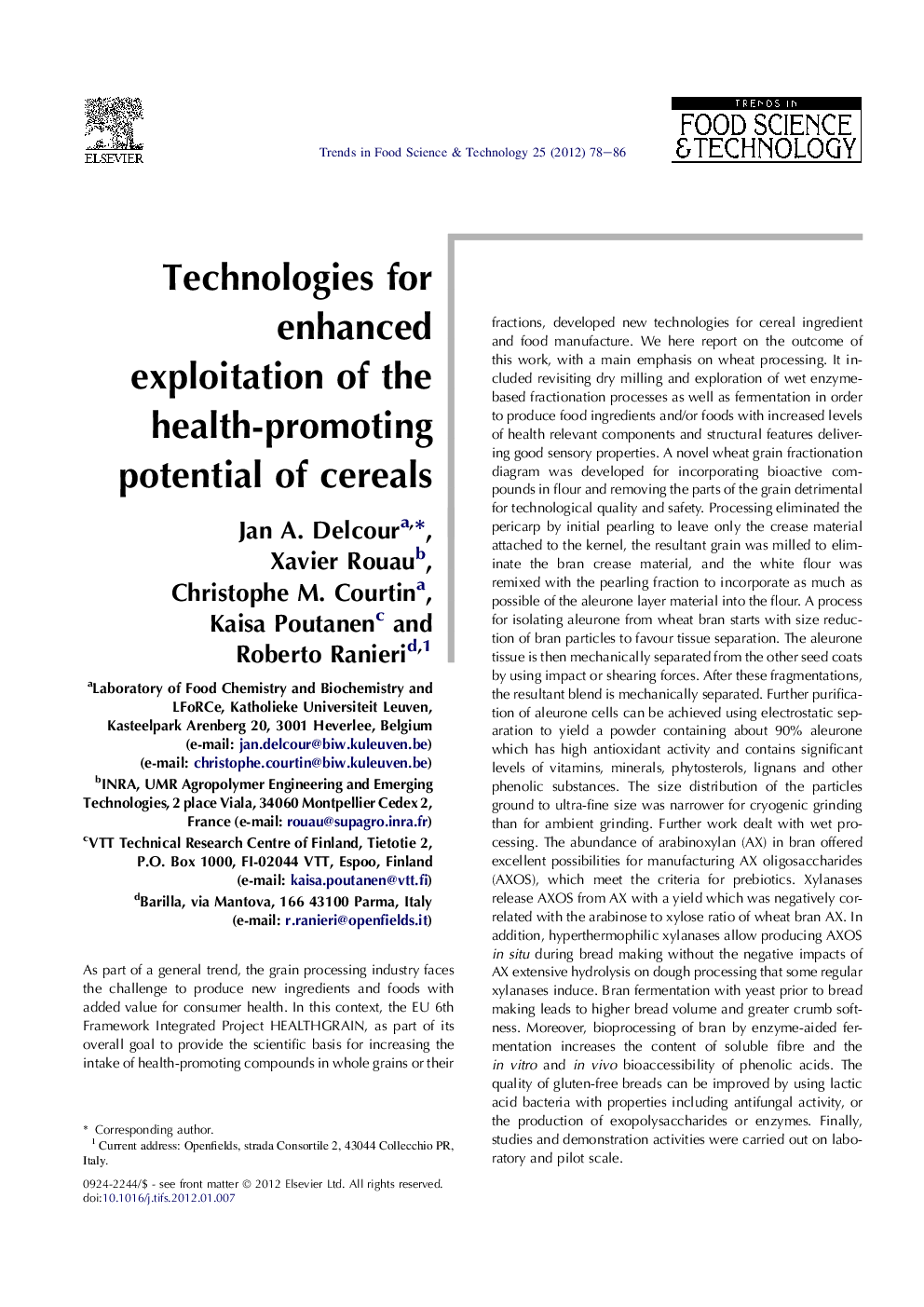| Article ID | Journal | Published Year | Pages | File Type |
|---|---|---|---|---|
| 2099892 | Trends in Food Science & Technology | 2012 | 9 Pages |
As part of a general trend, the grain processing industry faces the challenge to produce new ingredients and foods with added value for consumer health. In this context, the EU 6th Framework Integrated Project HEALTHGRAIN, as part of its overall goal to provide the scientific basis for increasing the intake of health-promoting compounds in whole grains or their fractions, developed new technologies for cereal ingredient and food manufacture. We here report on the outcome of this work, with a main emphasis on wheat processing. It included revisiting dry milling and exploration of wet enzyme-based fractionation processes as well as fermentation in order to produce food ingredients and/or foods with increased levels of health relevant components and structural features delivering good sensory properties. A novel wheat grain fractionation diagram was developed for incorporating bioactive compounds in flour and removing the parts of the grain detrimental for technological quality and safety. Processing eliminated the pericarp by initial pearling to leave only the crease material attached to the kernel, the resultant grain was milled to eliminate the bran crease material, and the white flour was remixed with the pearling fraction to incorporate as much as possible of the aleurone layer material into the flour. A process for isolating aleurone from wheat bran starts with size reduction of bran particles to favour tissue separation. The aleurone tissue is then mechanically separated from the other seed coats by using impact or shearing forces. After these fragmentations, the resultant blend is mechanically separated. Further purification of aleurone cells can be achieved using electrostatic separation to yield a powder containing about 90% aleurone which has high antioxidant activity and contains significant levels of vitamins, minerals, phytosterols, lignans and other phenolic substances. The size distribution of the particles ground to ultra-fine size was narrower for cryogenic grinding than for ambient grinding. Further work dealt with wet processing. The abundance of arabinoxylan (AX) in bran offered excellent possibilities for manufacturing AX oligosaccharides (AXOS), which meet the criteria for prebiotics. Xylanases release AXOS from AX with a yield which was negatively correlated with the arabinose to xylose ratio of wheat bran AX. In addition, hyperthermophilic xylanases allow producing AXOS in situ during bread making without the negative impacts of AX extensive hydrolysis on dough processing that some regular xylanases induce. Bran fermentation with yeast prior to bread making leads to higher bread volume and greater crumb softness. Moreover, bioprocessing of bran by enzyme-aided fermentation increases the content of soluble fibre and the in vitro and in vivo bioaccessibility of phenolic acids. The quality of gluten-free breads can be improved by using lactic acid bacteria with properties including antifungal activity, or the production of exopolysaccharides or enzymes. Finally, studies and demonstration activities were carried out on laboratory and pilot scale.
